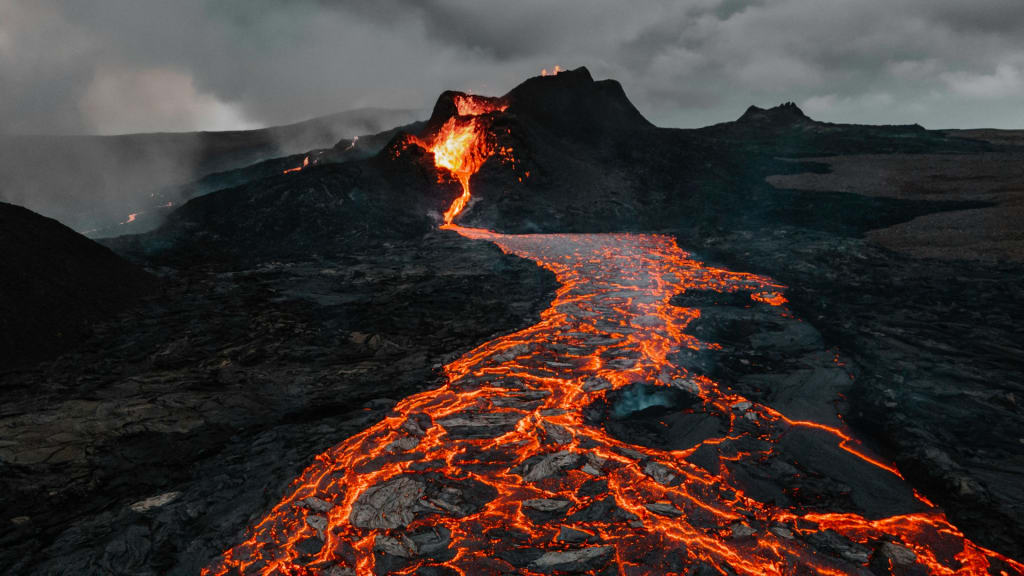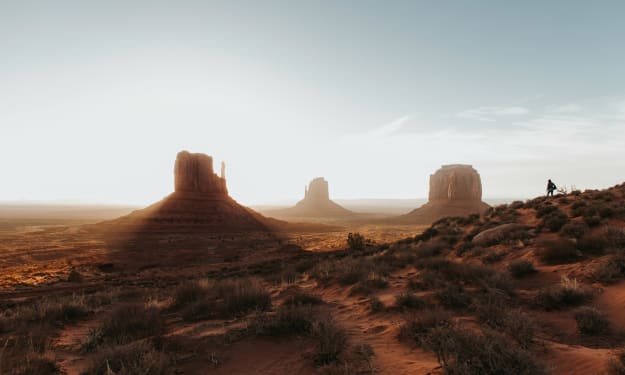The Birth of Europe's Youngest Volcano
A Look into Iceland's Volcanic Landscape

When we think of active volcanoes, one region comes to mind: the Ring of Fire in the Pacific Ocean. Thirty-four percent of the Earth's volcanoes sit within this belt. Compare this area to Australia, which doesn't have any volcanic activity. The old continent of Europe is also calm, or at least we like to think so. Can you guess what the most active volcano in Europe is? If you thought of Mount Etna on the island of Sicily and Italy, you were right. The volcano has erupted about 200 times and has been far from sleeping in recent decades. The last time this happened was in August 2023.
The highest mountain in the Mediterranean is half a billion years old, but in Iceland, there is a much younger volcano. It sprang into action on the 10th of July 2023 in the afternoon. Three fish appeared in the ground on a peninsula in the southwest of the island. This was at the base of a small mountain peak. Its name means little ram in the local language. The volcano spewed molten lava high into the air. There were also gas plumes in the area, but the scientific community wasn't surprised by the event. They already knew about the volcanic area that stretches between the cities of Rikic and Cic. Its name is hard to pronounce, and I want to buy a vow. It had already erupted during the previous two summers.
This activity came after eight centuries of dormancy. In the days leading up to the latest eruption, seismologists, the scientists who study earthquakes, recorded over 12,000 tremors. When the ground opened up in July, the fissures were over a mile and a half long. The following morning, two of them closed. All the lava was now coming out of the last fissure. It grew into an elongated cone, the simpler shape of volcano we are all familiar with. The lava soon filled a large crater. It grew almost 100 ft tall during the first week, and it is still growing.
On the night when the eruption started, lava spread out in all directions. Its cinders set ablaze the dry moss in the vicinity. Local authorities closed off the surrounding area. There were toxic gases from the volcanoes and smoke from the burning moss. Firefighters flocked to the area, and after a week, they proclaimed the area safe. Visitors soon came to witness the birth of Europe's youngest volcano. This form of tourism is quite developed in Iceland. People come from all over the world to watch active volcanoes. The land of Fire and Ice is home to more than 130 volcanoes. Some 30 of them are active.
Now, I know what you're thinking. Is volcano tourism safe? In Iceland, it is. The country's authorities research and constantly monitor all of the hotspots. The island is dotted with several dozen seismic stations. These help researchers accurately predict future eruptions, and emergency services are accustomed to these sorts of events. They can quickly cordon off danger zones. This is what happened in 2010. A volcano in the south of the island, the name of which everyone struggled to pronounce, erupted. It spewed out a plume of steam and ash that was 7 meters high. This wasn't a fun time to be an air traveler. Winds carried the enormous plume southeast toward northern Europe. Many countries closed their airspace for several days for safety reasons. The volcano erupted in March, but the Earth was shaking from January the same year. So seismologists knew that an eruption was approaching.
When it comes to the continent's youngest volcano, the tourist infrastructure is already there. Visitors can leave their cars at a designated parking lot, then they go on a 5-hour-long track. This leads to a viewing deck. Tourists are so close to the epicenter that they can feel the heat haze from the crater. The site is the most impressive at nighttime. Safety is never a concern. Scientists regularly chart out hazard maps that outline the borders of lava fields. This way, visitors who stick by the rules are never in harm's way.
More than a week after the eruption started, a section of the crater collapsed. Lava flowed downhill west of the volcano. This majestic smoldering hot river is slow-moving lava. Scientists categorize it as an AA type. The term is Hawaiian. It describes basaltic lava that has a rough and brittle surface. The flow is composed of broken lava blocks that are called clinkers. They fall off as the substance flows. This reveals red-hot areas. The cooler sections of lava are gray and black in color. When it moves forward, it produces a distinctive sound like shattering glass.
Nearly a month after the eruption of the new volcano, we got aerial footage of an interesting phenomenon. A tornado formed directly over the lava flow. This occurs due to the high temperatures in the area. When the conditions are right, a column of heated air can easily turn into a mini-tornado. Scientists observed a similar event happened during the 2018 eruption of Mount Kilauea in Hawaii.
The lava fields of Europe's second-largest island tell the story of the creation of Iceland. It sits above the place where the North American and Eurasian plates meet each other. Tectonic plates are huge rocky chunks of Earth's most outer layer. There are roughly 20 of them. They rest on a partially molten layer of rock. All the lava we see on the surface is due to the movements of these plates.
Iceland's volcanic landscape is a testament to nature's power. It's fascinating to witness the birth of the continent's youngest volcano and see how it shapes the land. As long as visitors follow the rules and stay safe, there's no harm in experiencing this incredible phenomenon.
About the Creator
Enjoyed the story? Support the Creator.
Subscribe for free to receive all their stories in your feed. You could also pledge your support or give them a one-off tip, letting them know you appreciate their work.





Comments
Test is not accepting comments at the moment
Want to show your support? Send them a one-off tip.